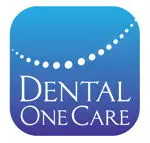One of the most common problems in orthodontics is
overcrowding, which occurs when there is not enough space in the jaws to accommodate all of the teeth. Overcrowding can cause patients to be self-conscious about their smile, as well as suffer from gum problems and uneven wear and tear on teeth.
Another common problem treated with orthodontics is
gapped teeth. Gaps between teeth are most commonly seen between the two front teeth but can occur anywhere in the mouth. In some cases, gaps are due to a mismatch between the size of the jawbone and teeth. Some patients have gaps due to missing teeth, finger/thumb sucking, prolonged pacifier/bottle use, or tongue thrusting.
Open bite is a condition in which the upper and lower teeth do not touch when the mouth is closed. This problem is typically due to habits such as thumb/finger sucking, chewing on foreign objects, or tongue thrusting- but may also be the result of jawbone problems.










